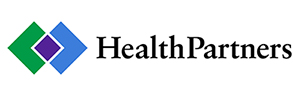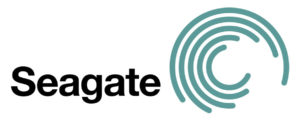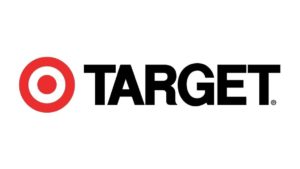Program Management
Maryrose has managed projects/programs for Target, Seagate, Best Buy, Prime Therapeutics, Ameriprise, Wells Fargo, United Health Group/Optum, and HealthPartners. She has managed programs in the areas of infrastructure, supply and warehouse systems, sales and marketing systems to a budget of $15Million and a headcount of 30. She has managed multi-site projects that sometimes included locations offshore and has built a good reputation dealing with time and culture differences very gracefully. Her organizational domain experience spans the traditional hierarchical tree to matrix-style resource management. She has done this using a range of methodologies: Waterfall, Agile and the hybrid, when required.
The types of projects in her portfolio range from full-scale Mergers & Acquisitions initiatives (for Seagate’s acquisition of Maxtor, Target’s divestiture of Marshall Fields to May Co, Target’s integration of its three operating companies, Target, Dayton’s, Marshall Fields), infrastructure enterprise software upgrade projects impacting upwards of 500 users, high-visibility application projects, projects developing PMO-type functionality such as offshore development standards, production promotion procedures (source and version control), and process improvement initiatives.
She is adept at using the many project management tools in conjunction with her Six Sigma toolkit. (MS Project, and the various statistical analysis tools used in her practice of Six Sigma) Ask to see Maryrose’s project management templates, material she uses to supplement/enhance house documentation when on an engagement. This material includes charters, plans, project roadmaps and presentations, requirements templates, project status templates, strategies on integration, QA and migration.
Following is a sample of programs Maryrose has managed:

First project for HealthPartners was installation of third party software ClaimsXten that does full-
service editing of claims, replacing an older version of the software that hooked up to legacy
systems in older platforms at HealthPartners.
Progressed on to defining project charter for an initiative to introduce automation of business rules
used for evaluating care options (Utilization Management), to enable compliance, maintain SLAs and
sustain favorable positions in organizations rating service levels of health care companies.
Finally, rolled out the tactical execution of Artificial Intelligence at HealthPartners, from the strategic
vision of an executive sponsor.

Click here to see a list of Maryrose’s UHG assignments and a description of those projects.

Among this bevy of programs that Maryrose has managed, this one program was non-IT. The task at hand was to move Ameriprise Bank from New York to Minneapolis. This assignment included all the tasks to ensure regulatory compliance with Federal banking agencies, the physical logistics of the move (including signage, etc), and the obvious functional changes. Maryrose put together the plan that executed this move seamlessly, coordinating the change with stakeholders in the Legal and Compliance areas of the company.

AVERAGE SELLING PRICE ApplicationFor Seagate, Maryrose’s maiden program was the AVERAGE SELLING PRICE application. This application was intended to replace a manual process supported by a single business resource. This function was integral in the determination of the pricing process for Seagate’s product. Since Seagate’s product was high-tech in nature and pricing very volatile, this system took into account input from Marketing, senior management overrides, Sales and product features as they are positioned in the market.
Maryrose walked into a project already in process, but without the project management direction. Most of the work performed on it was business analysis and requirement specification of a good part of the pricing procedure. Maryrose took control of the effort, going back to the business customer to probe what value they intended to derive out of the effort. She re-evaluated the project plan, and after determining that the current budget would not complete the project, rewrote the business case and brought it back to management for appropriation of the necessary funding.
Maryrose brought the project to completion to her satisfied customer, and within the budget she had gone to management to approve.
ORACLE ERP Project
When Maryrose had newly joined Seagate, Sales & Marketing IT was looking at replacing a few of the in-house applications with Oracle ERP modules, to align with other installations of modules in the Oracle ERP Suite. Maryrose was asked to participate in the program that would identify the scope of this effort. The task had to do with identifying the other candidate applications and assess the current systems performing the function for the organization.
Maryrose worked with the subject matter experts to frame a catalog of supported applications, compiled the required information to make this assessment for presentation to both the Oracle partners and Seagate senior management. This ended up being the most comprehensive documentation of applications supported by the group.
SEAGATE’S ACQUISITION of MAXTOR
This project began as a directive from senior management to do minimal integration, but enable Sales& Marketing to support offloading of remaining Maxtor inventory. This directive did not provide a clear scope of work for this project. Maryrose was recruited to help organize the projects around this program. Her responsibilities included gathering requirements from the direct and indirect customers for any Sales & Marketing endeavors, negotiating timelines and project scope and managing the execution of those efforts to line up with execution of business as usual.
Maryrose received accolades for her participation in this project from CIO Mark Brewer.

DIRECT2GUEST ProjectThe project was intended to replace the Supply and Warehouse system for the furniture business of Marshall Fields, a business that accounted for significant profitability for Marshall Fields.
Maryrose was originally recruited to this project on a temporary basis to develop plans for the development teams. It did not take long for her to be recruited into more responsibilities, i.e., plan quality assurance, integrate the development components, convert legacy data to the new system and roll out the new application. This project was a high-visibility, high-profile project at Target at that time. It was ranked #15 with the CIO portfolio.
The team was already at $7Million spend when Maryrose joined. The task was to minimize burn rate for the project and cap the cost. After careful assessment, Maryrose had determined that the earned value was not substantial and $7Million did not account for more than 30% completion status.
Maryrose took charge of the parts of the program delegated to her, took the project to on-time delivery on September, 2004. It was also at that time that the sale of Marshall Fields to May Company was announced. This posed significant resource issues to the project. All the project team members wanted to move on to other projects at Target. Maryrose successfully retained her resources and motivated her team to deliver through transition to May Company. She also managed to maintain the functionality of the systems she was charged to transition to suitable levels, even with the constraints of controlled cost.
ACCRUE Project
This project had to do with enabling the ACCRUE tool that target.com had purchased to enable Web Analytics on all Target sites. A $2Million investment had already been spent on this effort with dismal results.
Maryrose was drafted to this project to provide technical guidance and program management. It did not take two months for Maryrose to identify her customer, pin down a requirement set, plan and manage her team to execution. Maryrose undertook a thorough assessment of the current state and aggressively moved forward from there delivering the best possible product out of the components that Target had purchased of the Accrue tool. The result was a lucrative holiday season.
